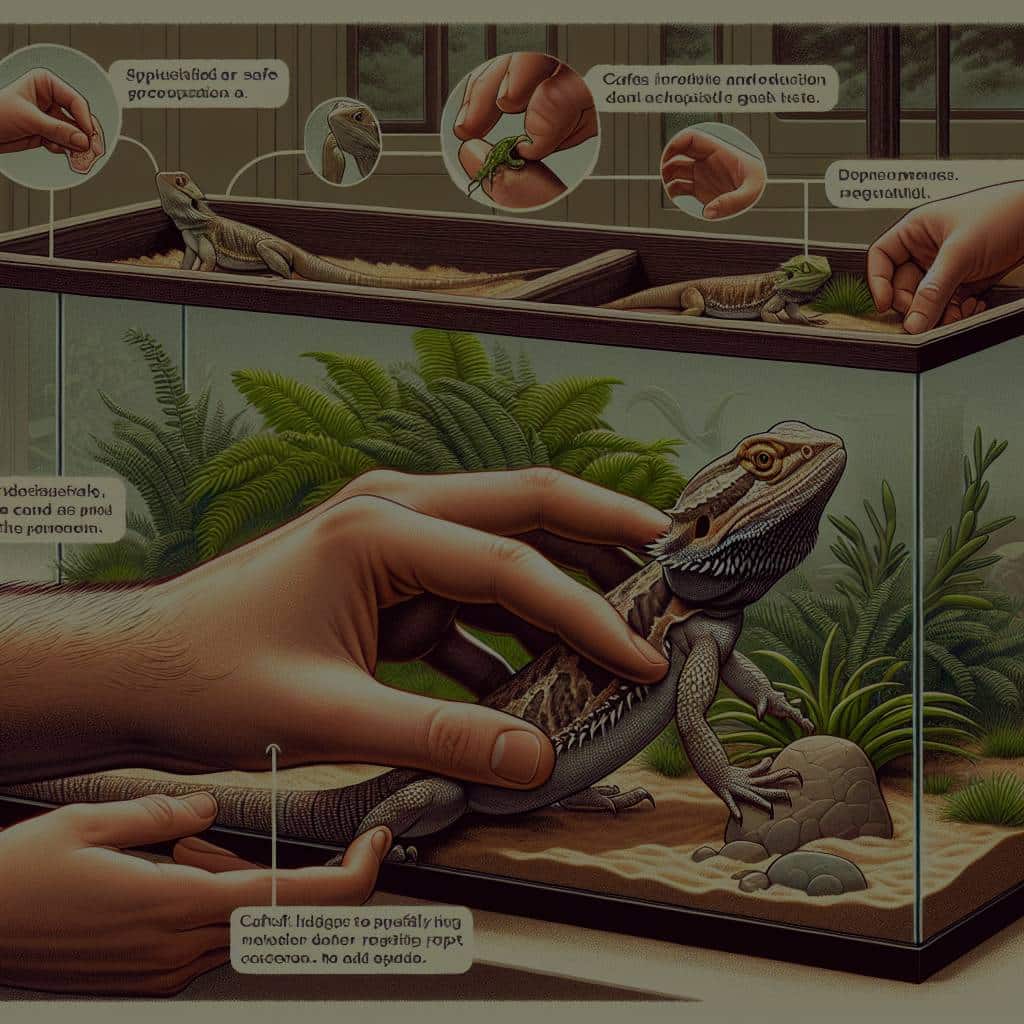How to Safely Introduce a New Bearded Dragon to Your Existing Reptile Collection?

For many reptile enthusiasts, there comes a time when an addition to the collection seems like the next logical step. This moment may rise when you spot a bearded dragon with a stunning array of colors or unique demeanor at a pet store or exhibition. Whatever the reason, if you already own a reptile pet, you must know that integrating a new dragon into your collection is not as simple as placing it in the enclosure. It’s a process that, if not accurately done, could cause stress or even aggression among your pets. This comprehensive guide will provide you with a professional insight into safely introducing a new bearded dragon to your existing reptile collection.
1. Proper Quarantine: The First Step
Before introducing the new bearded dragon into your reptile collection, it’s essential to keep it in quarantine. You might wonder why this is necessary. This measure is to ensure that your new pet does not carry any disease, parasites, or issues that could harm your existing pets.
Also to read : What’s the Correct Dosage of Probiotics for a Dog Suffering from Chronic Digestive Issues?
Secure a separate enclosure or tank for your new pet. The quarantine period should ideally last for about 60 to 90 days. During this time, monitor the bearded dragon closely for any signs of illness, discomfort, or abnormal behavior. It’s also a good time to get your new pet checked by a reptile vet. The vet will conduct necessary health checks, including a fecal test to rule out parasites.
Remember, even if your dragon appears healthy, it can be a carrier of parasites or diseases. Hence, this quarantine time is not just for the safety of your existing pets but also to ensure your new bearded dragon is healthy and disease-free.
Also to see : What Are the Ideal Humidity Levels for a Pet Chameleon’s Terrarium?
2. Preparing the Enclosure
Preparation of the enclosure or tank is another crucial aspect of introducing a new bearded dragon. It is all about making the new pet feel at home while ensuring that it doesn’t pose a threat to the existing ones.
Start by setting up a separate tank for your new dragon. Remember, bearded dragons are territorial creatures. Trying to introduce a new dragon into an existing dragon’s tank could lead to aggression, stress, and even fights.
The new tank should mimic the natural habitat of a bearded dragon. It should have a proper heat source, a UVB light, a basking area, and hiding spots. The temperature and humidity levels should be kept optimal. Provide fresh water and food regularly.
3. Gradual Introduction
Once the quarantine period is over and you are confident that your new pet is free from any health issues, it’s time to introduce it to the rest of your reptile collection.
Start by allowing your reptiles to view each other through the glass of their respective tanks. This visual interaction will help them get used to each other’s presence. After a few days, begin to alternate their habitats. This technique, known as "scent swapping," will familiarize them with each other’s scent without direct contact.
Never rush this process or force interaction. The aim is to allow both your old and new pets to adjust at their own pace. Any rush could lead to stress, aggression, or fear, which is not ideal for their health and wellbeing.
4. Supervised Interaction
After your reptiles have become familiar with each other via visual interaction and scent swapping, it’s time for supervised direct interaction. This interaction should always be outside their respective tanks to avoid territorial aggression.
Start with short periods of interaction and gradually increase the duration. Always be present during these interactions to intervene if aggression or stress signs are noted. This controlled interaction helps establish a hierarchy without severe fights or injuries.
5. Post-Introduction Care
Even after successful introduction, monitor your reptiles closely for any signs of stress, such as loss of appetite, lethargy, or aggressive behavior. If any of these signs are noted, it’s best to consult a reptile vet.
Remember, every bearded dragon is unique, and it will take time for your pets to adjust to each other. Be patient, and your effort will pay off when you see your dragon thriving in its new home.
In summary, introducing a new bearded dragon to your existing reptile collection is a delicate process. It demands a lot of care, patience, and consistent monitoring. However, the joy of seeing your new pet happily coexisting with your other pets is definitely worth the effort.
6. Integrating Your New Bearded Dragon into the Group
Once you’ve ensured that your new bearded dragon is healthy, introduced it to its new environment, and started supervised interactions, the next logical step is to integrate it into the group. However, remember that bearded dragons are solitary creatures in the wild and can be quite territorial.
Begin the integration by putting the new dragon’s tank in close proximity to the others. This allows your pets to adjust to the new member’s presence without any physical interaction. Be vigilant during this time for any signs of stress or aggression from either party.
Next, you can begin to introduce your new bearded dragon to the group in a controlled, neutral territory. This could be a larger tank or a common area where you can closely monitor their behavior. Ensure that there’s enough space for each dragon so they don’t feel threatened. This step is critical for avoiding territorial disputes which can lead to stress or even physical harm.
Always supervise these interactions. If the bearded dragons show signs of aggression towards each other, separate them immediately. You don’t want any of your pets to get injured.
Bear in mind that each dragon will respond differently, and this process might take longer for some pets than others. Patience is key in successfully integrating your new bearded dragon to your existing reptile collection.
7. Monitoring Your Dragons Post-Integration
After successfully integrating your new bearded dragon, it’s crucial to continue monitoring your reptile collection closely. Monitor their behavior, eating habits, and overall health. If any of your dragons show signs of stress like decreased appetite, increased aggression, or lethargy, it’s best to consult a reptile vet immediately.
Keep in mind that each bearded dragon is unique and will require different care and handling to ensure their wellbeing. Maintain regular checks, keep their tanks clean, ensure a balanced diet, and provide an environment that mimics their natural habitat as closely as possible.
Conclusion
In conclusion, introducing a new bearded dragon to your existing reptile collection should be a well-thought-out process. From the initial quarantine period to supervised interaction and post-integration care, every step is crucial to ensure the health and happiness of your bearded dragons. It’s a process that requires a great deal of patience and attentive care. But the reward is truly satisfying when you see all your pets cohabiting peacefully.
Remember, the goal is not just to add a new pet to your collection, but to ensure that every member of your reptile family thrives. So take your time, follow these steps, and soon your new bearded dragon will feel right at home.
